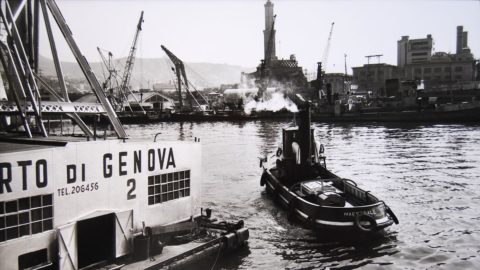The Anthropocene is no longer enough to interpret the changes in the world produced by man. Now the reflection of the Mast Foundation of Bologna goes as far as the Technosphere, that is the set of all the structures that human beings have built to ensure their survival on Earth. Huge subject, at the same time philosophical, scientific, economic, ethical, architectural, that is the heart of the fourth edition of Foto/Industria, the biennial dedicated to industry and work photography, a unique review on the world scene for the specificity of the theme. Entrusted to the new artistic direction of Francesco Zanot (Milanese, born in 1979), "Tecnosphere: man and building" is spread over 11 exhibitions until November 24: 10 are set up in historic spaces in the center of Bologna, while "Anthropocene" , curated by Urs Stahel, can be seen at the Mast (Manufacture of Arts, Experimentation and Technology) until 5 January 2020.
A journey to discover Bologna and the buildings that house the 450 photographs exhibited, 16 video projections and a film. “A real sampling investigation on the theme of building and change through the gaze of photographers who come from all over the world, whether they are already established or emerging – explains Zanot – The vastness of man's intervention on the environment it is made evident by the diversity of subjects and places represented in the images of the authors. Fundamental machine for manufacturing the imagination of the last two centuries and constantly updating it, photography is at the same time an indispensable research tool and a product of man's inextinguishable need to change the world”.
Next to consecrated names of international photography like Albert Renger-Patzsch and André Kertész, there are the Italians Luigi Ghirri and Lisetta Carmi. And again great artists such as Armin Linke and David Claerbout alongside younger ones such as Matthieu Gafsou, Stephanie Syjuco, Yosuke Bandai and Délio Jasse, who use the most innovative digital technologies for their artistic research.
The transformations of the Ruhr which, from a rural environment, became the center of the German steel industry in the 70s are at the center of the XNUMX shots by Renger-Patzsch originating from Monaco and now in the Pinacoteca Nazionale. By André Kertész, at Casa Saraceni, you can see the unpublished photos from 1944, the result of his only commissioned works on industrial products, which immortalize Firestone tires in Ohio. Also on commission are the shots never seen by Luigi Ghirri in the exhibition "Prospettive Industriali" in the basement of Palazzo Bentivoglio: through his lens, the works for Marazzi, Ferrari, Bulgari and Costa Crociere dress the poetics of the photographer from Reggio.
United by a reflection on the more political aspects are the works of the over ninety year old Lisetta Carmi on the port of Genoa (Oratorio di Santa Maria della Vita), by Armin Linke at the University Library and by Délio Jasse at the Fondazione del Monte di Bologna and Ravenna. If the former has a militant look at the conditions of port workers in the mid-2016s, Linke investigates the exploitation of the seabed in "Prospecting Ocean" after research between 2018 and XNUMX in the most important marine science laboratories in the world. Jasse, on the other hand, tells the story of Luanda, the capital of Angola, among the African cities with the fastest growth rate (it is estimated that in 2030 over 15 million people will live there compared to 5 million today), where mainly Chinese and international companies are building.
The Belgian David Claerbout at Palazzo Zambeccari and Yosuke Bandai at the International Museum of Music they look at the remnants of the building fever. Claerbout studies one of the greatest architectural feats of the time, the Olympiastadion of Berlin, simulating its dissolution and decay over a thousand years. Bandai instead works with waste, an element inherent in the technosphere.
They look to the future the works of Matthieu Gafsou and Stephanie Syjuco. At Palazzo Pepoli Campogrande the young Swiss proposes a photographic documentary on the cultural movement of transhumanism, according to which technology should be exploited to the maximum to increase physical and intellectual performance. In "Spectral City" at the Mambo, the Filipina Syjuco retraces with Google Earth, in San Francisco, the itinerary of the cable car filmed by the Miles Brothers in 1906, showing a city completely re-built by man and by the algorithms at the basis of the software .
“With Foto/Industria – concludes the president Isabella Seràgnoli – the Mast Foundation wants to once again reflect on what has happened and is happening in the world: it is our responsibility. Acquiring awareness already means putting one foot in the future”.
All exhibitions are free to enter. Info on the photo industry website.





